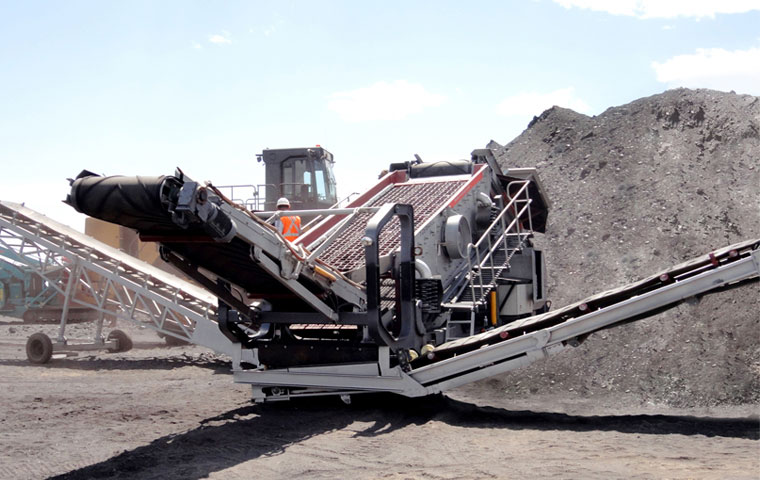The Essential Guide to Used Gravel Screening Equipment
In the world of construction, mining, and landscaping, efficiency and cost-effectiveness are paramount. For many operations, particularly small to mid-sized businesses or those tackling specific projects, investing in brand-new screening equipment can be a significant financial burden. This is where the market for used gravel screening equipment becomes an invaluable resource. Purchasing a pre-owned screener is not merely a way to save money; it is a strategic decision that, when approached correctly, can provide exceptional value and performance for years to come.
Understanding the Types of Screening Equipment
Before diving into the used market, it’s crucial to understand the primary types of screening equipment available. Each type serves a slightly different purpose and operates on distinct principles.
- Vibratory Screens: These are the most common type. They use vibration to sort material by size as it moves across a screen deck. They are highly efficient for high-volume processing and can handle everything from sand to large aggregate.
- Trommel Screens: Characterized by their rotating cylindrical drum, trommel screens are excellent for processing difficult, sticky, or high-moisture materials like topsoil, compost, and demolition waste. The tumbling action helps break apart clumps.
- Deck Screens (Double or Triple): These screens feature multiple stacked decks, each with a different screen mesh size. This allows for the simultaneous separation of feed material into three or four different product sizes in a single pass, maximizing output and efficiency.
- Scalping Screens: Designed as heavy-duty workhorses, scalping screens are used at the beginning of a process to remove oversized material and fines before primary crushing or further processing. They are built to withstand large rocks and abrasive conditions.
The Compelling Advantages of Buying Used
The decision to purchase used screening equipment is driven by several powerful advantages that directly impact a company’s bottom line and operational flexibility.
Significant Cost Savings: This is the most apparent benefit. A used screener can often be purchased for a fraction of the cost of a new model, freeing up capital for other critical areas like labor, fuel, or additional machinery. The initial depreciation hit has already been absorbed by the first owner..jpg)
Proven Performance and Reliability: Unlike a new, unproven model, a used machine often has a track record. If it has been well-maintained, its performance characteristics and any potential quirks are known quantities. Online forums and industry networks can provide insights into the long-term reliability of specific makes and models.
Immediate Availability: New equipment can have lead times stretching from weeks to months. A used screener is typically available for immediate purchase and deployment, allowing you to capitalize on project timelines without delay.
Lower Insurance Premiums:The insured value of your equipment is a key factor in determining premiums. Since used machinery has a lower market value, your insurance costs will generally be lower compared to insuring a new machine.
A Buyer’s Checklist: What to Look For (and Look Out For)
A successful purchase in the used equipment market hinges on thorough due diligence. A careful inspection can mean the difference between acquiring a valuable asset and an expensive headache.
- Overall Condition & Structure: Look beyond superficial dirt and paint. Inspect the main frame for any cracks, bends, or signs of extensive welding repairs. Check for significant rust, especially in structural components.
- The Screen Box & Decks: This is the heart of the machine. Examine the screen decks for wear and tear. Are they bowed or damaged? Check the tensioning system for springs or rubber bushings—are they cracked or worn out? The condition here directly affects screening efficiency.
- The Power Unit & Drives: For vibratory screens, start the engine if possible. Listen for unusual noises from the bearings or the vibration mechanism itself. Check for oil leaks from hydraulic systems or gearboxes. Ask for maintenance records related to these core components.
- Conveyors & Belts: If the unit includes stacking conveyors, inspect the belts for cracks, fraying, or excessive wear. Check conveyor rollers and motors for proper operation.
- Crucial Step: Operate It Under Load: If at all possible,the most telling test is to run material through it.Watch for how it handles the load.Does it screen effectively?Are there unusual vibrations?Does it plug up easily?This operational test reveals more than any static inspection ever could.
Sourcing Your Equipment: Where to Look
The avenues for finding quality used screening equipment have expanded dramatically with the internet.Established online marketplaces dedicated to heavy machinery are excellent starting points.Equipment auction houses,both live and online,present opportunities for competitive pricing but require quick decision-making.Perhaps one of themost reliable sources is through established dealerships that specialize in construction equipment.They often offer certified used machines that have been inspected,serviced,and sometimes even come witha limited warranty,a feature rarely found in private-party sales.Finally,directly from other contractors who are upgrading their fleets can also bea fruitful path,fostering industry connections.
A Final Word on Due Diligence
The world of used gravel screening equipment offersa smart path forwardfor savvy business owners.It demandsa balanceof optimismand caution.Witha clear understandingof your operational needs,a keen eye during inspection,and patiencein your search,findinga durableand cost-effective screeneris an achievable goal.This strategic investmentcan becomea cornerstoneof your operation’s productivity,demonstratingthat great value doesn’t always have tobrand new.
</html




